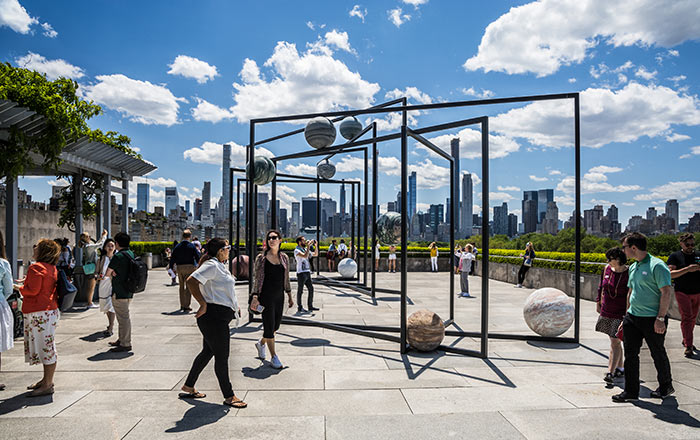Petal side table
Designer Richard Schultz American
Not on view
The circular top of this side table comprises eight triangular wood panels that are intended to simulate petals. Each panel is mounted on a support radiating outward from a stem of powder coated steel or cast iron that terminates at the base in eight separate spreading legs that stabilize the piece.
This table was designed by Richard Schultz for Knoll in 1960. Schultz cited Queen Anne’s Lace as the inspiration for the flower-like design, which was meant to be used outdoors. Each flower cluster of Queen Anne’s Lace moves independently of another, so Schultz mounted each "petal" on its own stem, which would allow the table to expand and contract with the weather. Intended to accompany Harry Bertoia’s diamond wire chairs, the Petal Table serves as an example of organic design and biomimicry; Schultz used biomechanics to enhance the performance of the product.
